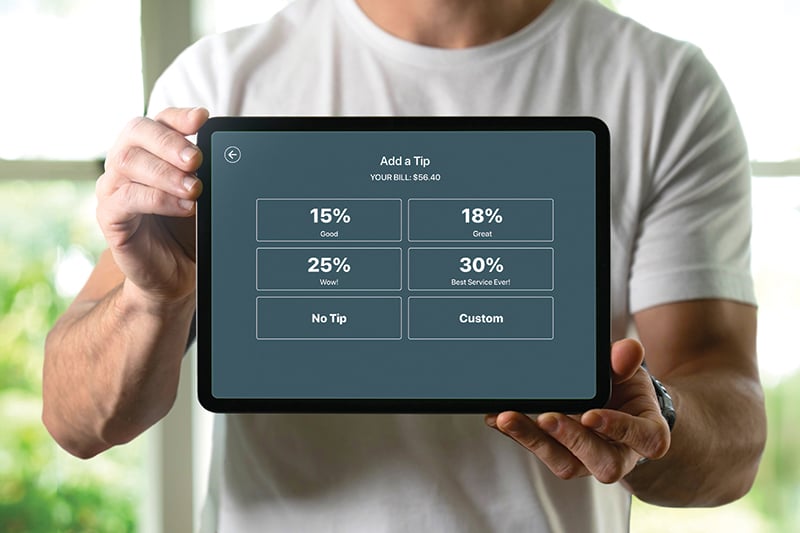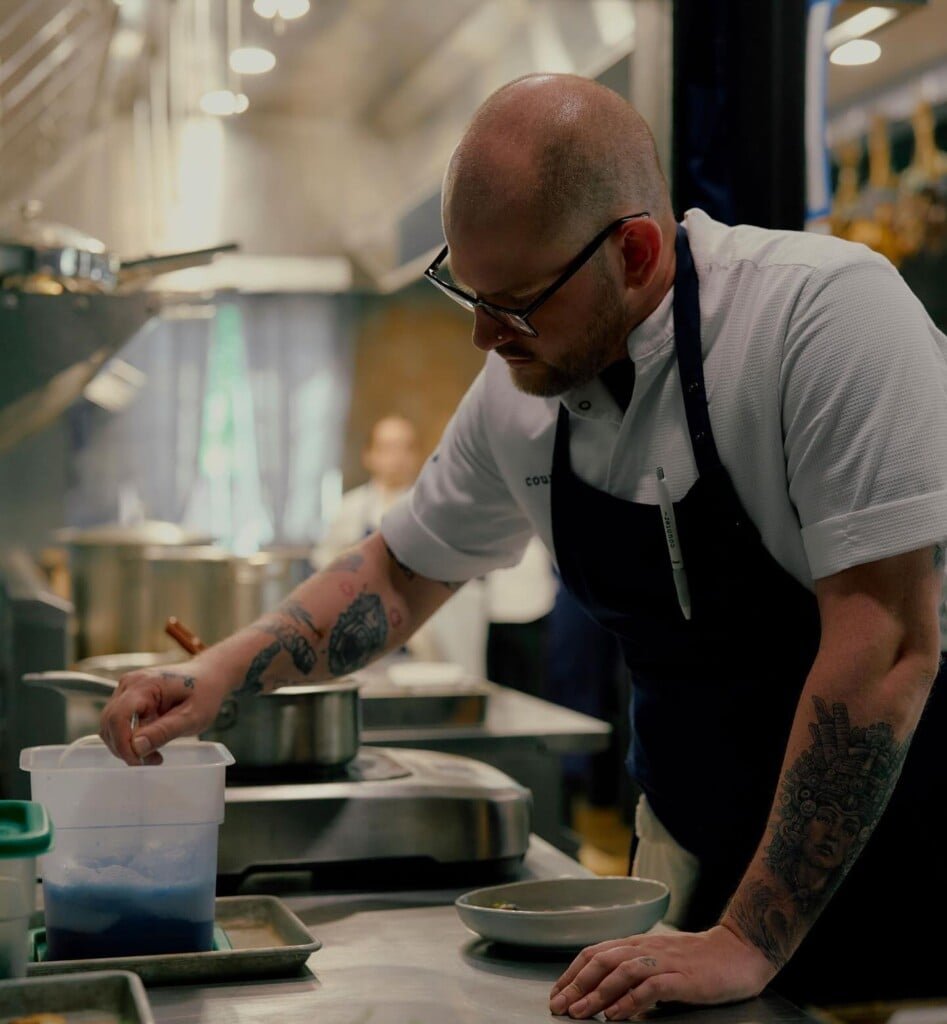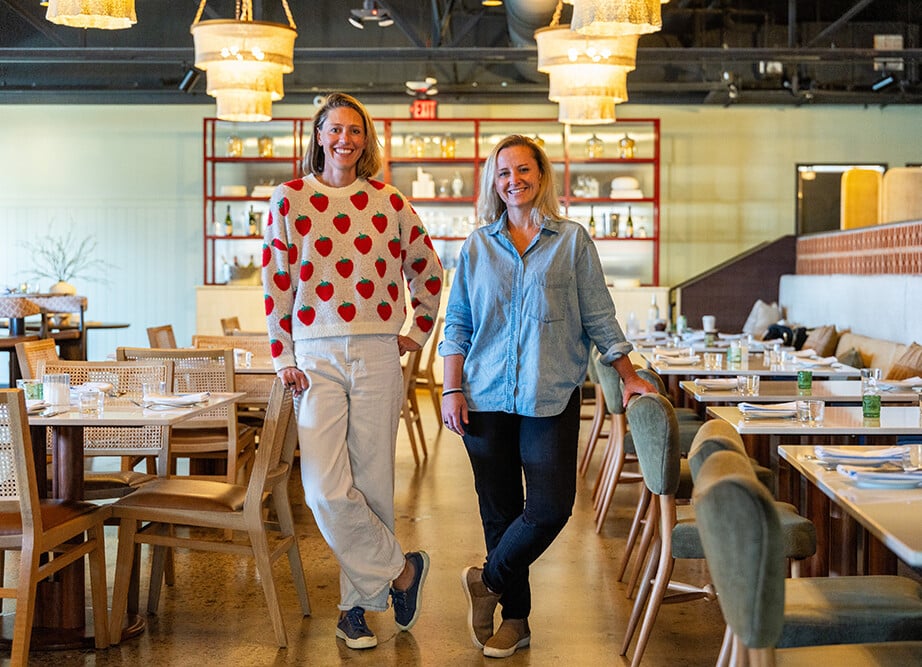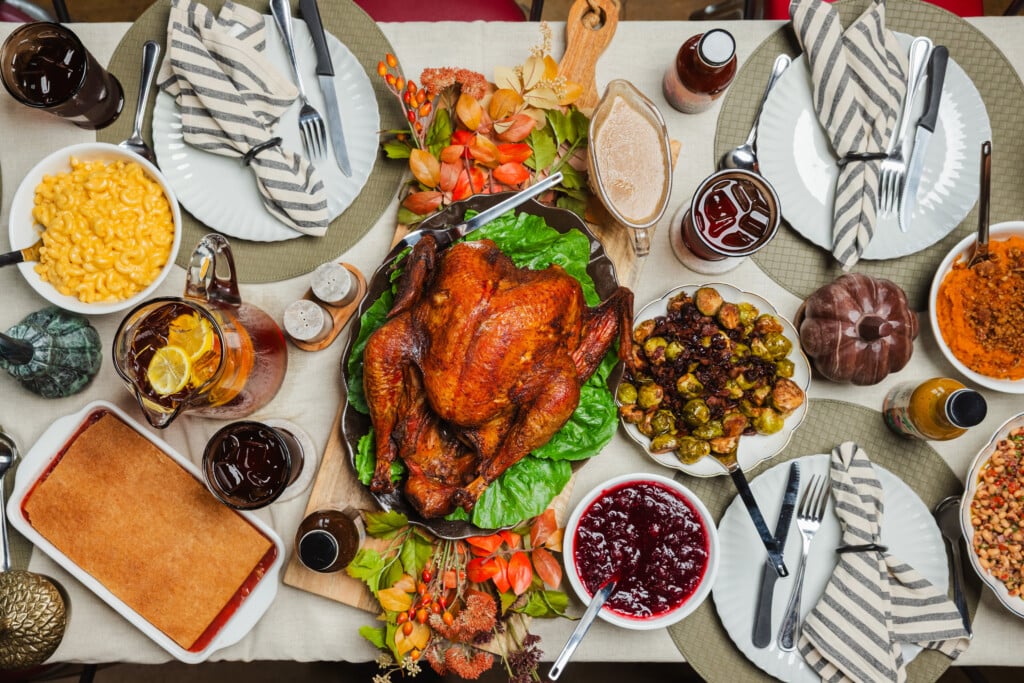Tipping Points: Is Gratuity Becoming Gratuitous?
Has the great gratuity boom of 2020 fueled out-of-control tipflation?

For decades, diners have wondered, What’s an appropriate tip for my server? Since 2020, it seems we’re all asking each other, “Should I tip when no one’s served me? How much? And who exactly am I tipping?” The barista hands over your latte and flips the tablet toward you, gratuity options displayed on the screen: 15%, 20%, 25%, custom, none. If I hit “20%,” am I getting ripped off? If I hit “none,” am I a jerk?
If that’s the case, the expectation to tip—a COVID-era recognition of the value of and economic pressure on food-service workers—is compelling more of us to be jerks: A 2023 Bankrate survey found that the increasing pressure to leave a gratuity is actually leading people to tip less, not more. Tipping fatigue is real, and fast-casual spots like Panera and Cava, where you order at the counter and clear your own table, leave you wondering what you’re tipping for.
“Some point-of-sale systems have gotten really creative in maximizing tips,” says Josh Luger, co-founder of the national Tex-Mex chain Capital Tacos, which has two Charlotte locations. If it’s set to dollar amounts, you might default to the lowest option. That still adds $1 to a $4 order—a 25% gratuity.
After a decade in the restaurant business, Luger is often asked what constitutes tippable work from a restaurant employee, particularly in the fast-casual space. “Personally, I wouldn’t require a tip,” he says. “It’s reasonable to make the ask, but it’s important how you make the ask.”
It’s why all 13 of his locations have open kitchens. “You have to make the work visible to customers,” he says. “Before you even hit the register, you’re smelling what’s going on. We run a scratch kitchen, and staff is there at 6:30 a.m. prepping homemade recipes and grilling every item to order. … We’ve got to communicate what we do to earn that tip.”
Tipping is an American custom, and failing to tip, while not punishable by law, is generally considered rude. “A 15% to 20% gratuity is still standard when you dine out; leaving a few dollars in a coffee shop’s tip jar is totally up to you,” Luger says. When a gratuity is already applied, though, it can be tricky. “My opinion is, it’s OK to leave it at that. Take the restaurant’s lead unless you feel they went above and beyond.”
With delivery drivers, the etiquette isn’t as clear. Many people don’t tip their Postmates or Uber Eats drivers because they mistakenly assume delivery fees cover it. Luger encourages customers to tip drivers, especially if they had to bike in the rain or climb up stairs with a supersized order. Unless something is wrong with your delivery, stick to the restaurant industry standard of 15% to 20%.
Tipflation has even spread to the fast-food sector. A survey from the management software firm Toast found that roughly half of quick-service restaurants like Starbucks and McDonald’s now offer a tipping option, up from 38% in 2020. In a fast-food setting where employees aren’t allowed to accept tips, though, Luger thinks it promotes customer loyalty. “Value is a primary part of that offering,” he says. “It’s an all-inclusive experience with a limited level of personal service.”
Rolling all gratuities into restaurant checks might seem like the obvious solution, but according to Bankrate, only 16% of Americans would be willing to pay higher prices if this were the case. “It’s been tested in the U.S., with good intentions, and it just hasn’t worked,” Luger says. “People just want to see lower prices. In America especially, people want the option to be theirs.”
TAYLOR BOWLER is the lifestyle editor.





